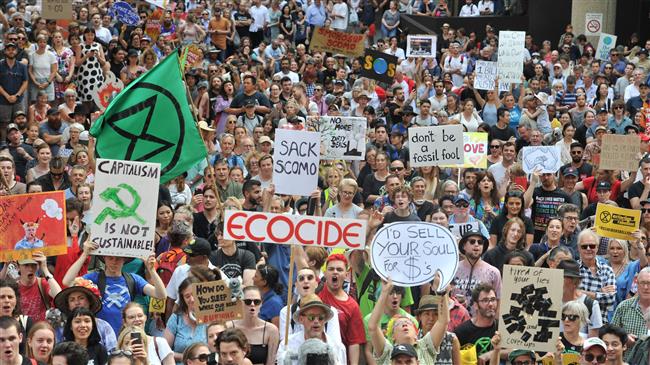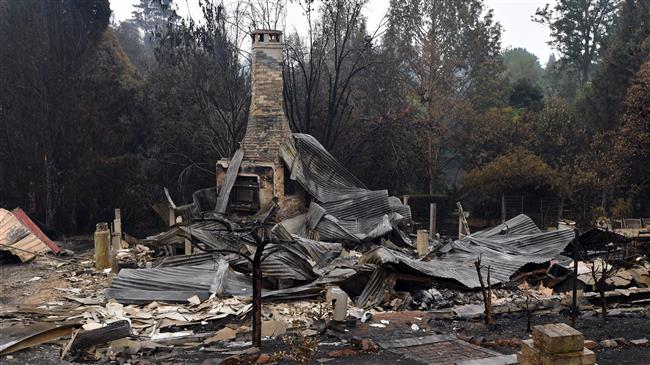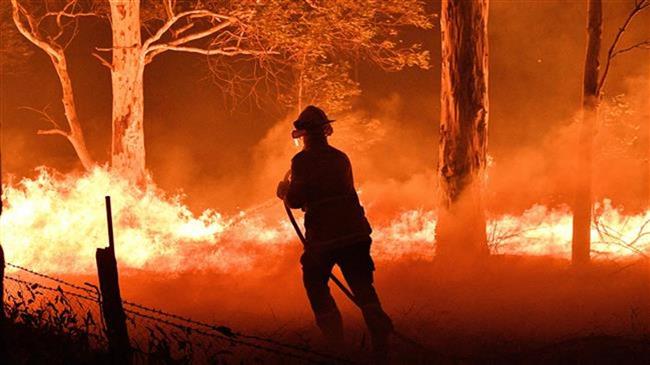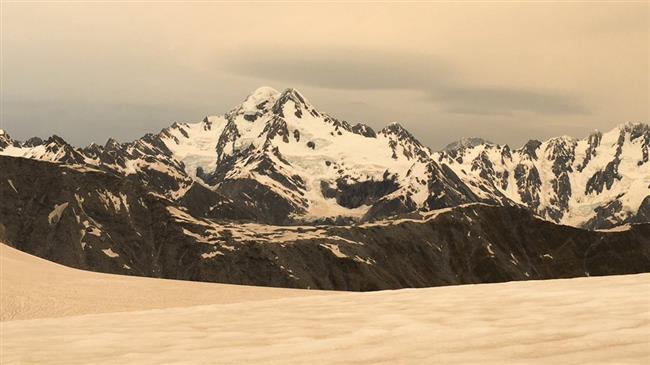Strong winds create monster blaze in Australia
Gale-force winds in Australia have merged two enormous fires into a megablaze spanning an area four times the size of Greater London on Friday, while tens of thousands rallied to again demand action on climate change.
"The conditions are difficult today," said Shane Fitzsimmons, the rural fire service commissioner for New South Wales State, after days of relative calm.
"It's the hot, dry winds that will prove once again to be the real challenge."
Temperatures soared above 40 degrees Celsius in parts of New South Wales and neighboring Victoria, where attention was focused on the two fires that linked to form yet another monster blaze of more than 600,000 hectares.
Fire service spokesman Anthony Bradstreet told AFP it was believed the blaze was sparked by dry lightning.
A "state of disaster" was extended 48 hours ahead of Friday's forecast of scorching temperatures, and evacuation orders were issued for areas around the New South Wales-Victoria border.
New South Wales Premier Gladys Berejiklian said there were more than 130 fires burning in the state, with just over 50 not yet under control.
On Kangaroo Island, off South Australia, the largest town was cut off as firefighters battled dangerous infernos, forcing some residents to flee to the local jetty.
The catastrophic bushfires have killed at least 26 people, destroyed more than 2,000 homes, and scorched some ten million hectares (100,000 square kilometers) — an area larger than South Korea or Portugal.

University of Sydney scientists estimate one billion mammals, birds, and reptiles have been killed in the fires.
The Insurance Council of Australia estimated losses from the fires have so far totaled Aus$939 (US$645) million.
The severe conditions have been fueled by a prolonged drought and worsened by climate change, with experts warning that such massive blazes were becoming more frequent and intense.
Australia experienced its driest and hottest year on record in 2019, with its highest average maximum temperature of 41.9 degrees Celsius recorded in mid-December.
(Source: AFP)
VIDEO | Leader meets workers on Labor Week
French police called in to break up US-style pro-Palestinian student demo
VIDEO | US continues starving Syrians, stealing their resources
Yemeni forces strike Israeli ship, Port of Eilat in solidarity with Gaza
Columbia, Yale students bent on ending US support for Israeli genocide
VIDEO | Genocide in Gaza
Iran calls on BRICS to play role in stopping Israeli crimes
President Raeisi’s historic visit opens new chapter in Iran-Pakistan ties













 This makes it easy to access the Press TV website
This makes it easy to access the Press TV website